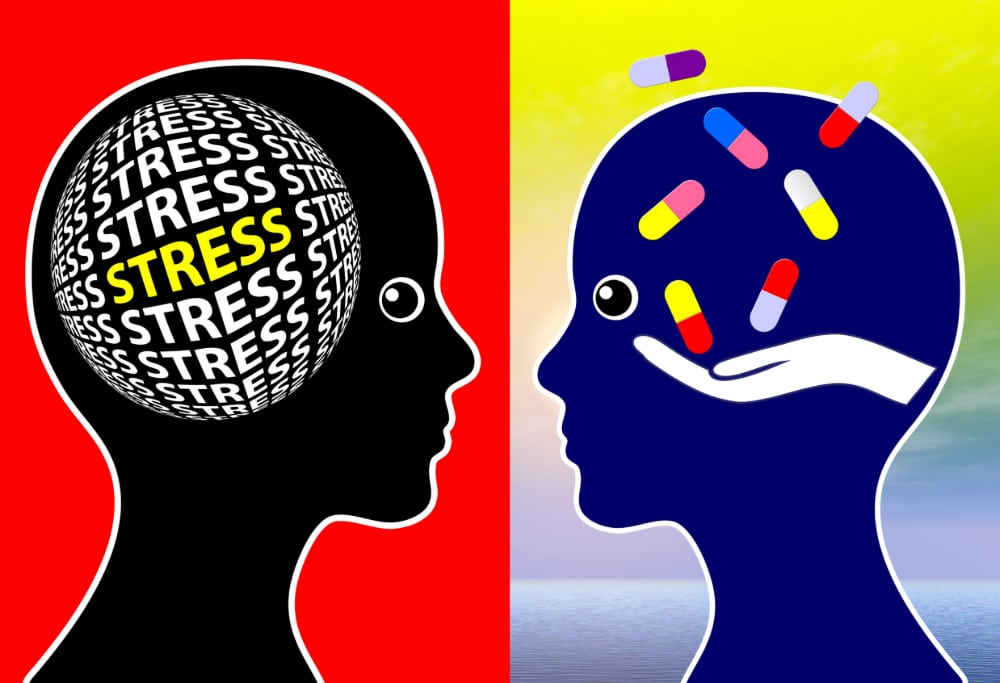A Lever in the Brain Regulating Stress and Pain

One theory of alcoholism is that it’s the result of a hedonistic desire for the feeling of being intoxicated. Another theory is that it originates in a desire to reduce pain — until the pain being reduced is the wanting of alcohol.
New research with lab rats indicates there is a specific region of the brain that teaches animals to relieve stress by consuming alcohol. It’s called the paraventricular nucleus of the thalamus, or PVT. It’s referred to as a “midline brain structure” that mediates between physical states and emotional states.
The PVT matches threat or arousal signals with appropriate defensive measures, according to a 2021 article from Frontiers in Behavioral Neuroscience. A separate article in the same publication explores the connection between the PVT and eating behaviors in animals. The researchers write:
[PVT] control[s] both food seeking and consumption and may be balancing their expression. Distinct and potentially competing PVT circuitries appear to regulate these two behaviors. Food seeking involves planning, navigation, risk assessment, and learning and memory, and PVT’s connections with the prefrontal cortex, hippocampal formation, and the amygdala would enable these computations. Thus the PVT is well positioned to bias food seeking over other behaviors, and to re-direct it to consumption when food is found, or avoidance when faced with danger.
The PVT responds to cues associated with food, including the location of food, its palatability, previous adverse reactions, previous hedonistic reactions, and even the senses of taste and smell. The PVT integrates these food-related signals with stress and threat signals.
When faced with danger, the PVT shuts down the eating impulse. It also tells the body to stop eating when full. It does this through activation of glucagon-like peptide-1 (GLP-1) receptors — the same GLP-1 receptors targeted by Ozempic, Wegovy, and other GLP-1 receptor agonist drugs. Researchers explain the central role of the PVT:
The PVT is uniquely positioned to integrate hunger, arousal, and stress and adaptively regulate behavioral choice.
The PVT receives signals resulting from stress, anxiety and pain, and triggers responses in feeding, food seeking, and appetite. It enhances the palatability of food when stress is relieved. It is involved in drug-seeking behavior as well: “It is also important in drug addiction and relapse, as well as aversive states associated with drug withdrawal.”
Just last week, researchers at Scripps Research published a study specifically looking at the PVT in relation to alcohol use disorder (AUD). The study shows that lab rats “learn to drink [alcohol] in order to relieve the stress and discomfort of withdrawal.” Once lab rats link the ability of alcohol consumption to ease pain, the PVT lights up when triggered by environmental cues.
Monitoring activity in the PVT allowed researchers to see when rats were “using alcohol not for enjoyment but to avoid suffering.” This research helps explain problems associated with relapse during withdrawal, and points to possibilities for targeting the PVT with drugs, such as GLP-1 receptor agonists.
The discovery of the role that PVT plays in alcoholism is helping scientists zero in on the levers of addiction and the methods to manipulate them to enhance recovery.
Written by Steve O’Keefe. First published October 7, 2025.
Sources:
“The Paraventricular Nucleus of the Thalamus as an Integrating and Relay Node in the Brain Anxiety Network,” Frontiers in Behavioral Neuroscience, February 24, 2021.
“The Function of Paraventricular Thalamic Circuitry in Adaptive Control of Feeding Behavior, Frontiers in Behavioral Neuroscience, April 27, 2021.
“Scientists Find Brain Circuit That Locks Alcohol Users in Addiction Cycle,” SciTechDaily, September 26, 2025.
“The paraventricular thalamus mediates visceral pain and anxiety-like behaviors via two distinct pathways,” Neuron, July 23, 2025.
Image Copyright: sangoiri.




